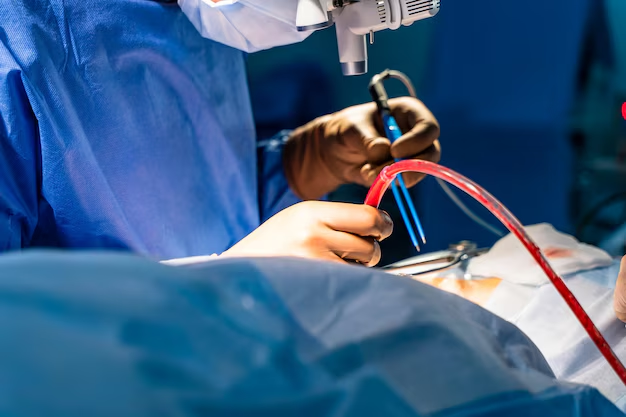What to Expect from Cataract Surgery: A Comprehensive Guide
For many people, the prospect of undergoing surgery can be daunting. Yet, when it comes to cataract surgery, the procedure is among the most common and safest operations performed today. If you're grappling with blurry vision due to cataracts, understanding what the surgery involves might ease your concerns and help you feel more prepared. This article will walk you through each step of the process, from preparing for surgery to post-operative care, and everything in between.
📚 Understanding Cataracts
Before delving into the surgical process, let's briefly overview what cataracts are. In essence, a cataract is the clouding of the lens inside the eye, which can lead to blurred vision and make activities like reading, driving, or recognizing faces challenging. Cataracts can form as part of the natural aging process, but they may also result from factors like diabetes, smoking, or long-term exposure to sunlight.
⚙️ How Cataract Surgery Works
Cataract surgery primarily involves removing the cloudy lens and replacing it with a clear artificial lens. Here's a breakdown of the different stages:
Pre-Surgical Preparation
Eye Examination: Before deciding on surgery, your eye specialist will conduct a thorough eye examination to determine the severity of your cataracts. They'll check your vision and assess how cataracts affect your daily life.
Measurements: Your doctor will measure the size and shape of your eye to choose the right type of intraocular lens (IOL). This artificial lens will replace your natural lens and is tailored to fit your specific needs, potentially correcting other vision issues like astigmatism.
Discussion of Lens Types: Several types of lenses are available, each offering different benefits. You may choose from monofocal lenses, which improve distance vision, or multifocal lenses, which can enhance both distance and near vision.
Pre-Operative Instructions: You'll receive guidelines on what to avoid before the surgery, such as food, drinks, and certain medications. It's crucial to follow these instructions closely for a successful operation.
The Surgical Procedure
Anesthesia: Cataract surgery is typically performed under local anesthesia, which numbs the eye. Patients remain awake during the procedure but may feel mild pressure. Sedatives can also be administered to help with relaxation.
Incision: The surgeon makes a minor incision at the edge of the cornea. Through this incision, small instruments are inserted into the eye.
Phacoemulsification: The most common technique to remove the cloudy lens is phacoemulsification, where an ultrasonic device breaks up the cataract, and the fragments are gently suctioned out.
Lens Implantation: After removing the cataract, the surgeon places the IOL into the now-empty lens capsule. Typically, no stitches are needed, as the incision is self-sealing.
Post-Surgery Care
Recovery Time: Cataract surgery is an outpatient procedure, meaning you can go home the same day. Though vision may be blurry immediately after, it should start to improve within a few days.
Follow-up Appointments: Following surgery, it's essential to attend all recommended follow-up visits to ensure healing is on track and to address potential complications.
Medication: You'll generally be prescribed antibiotic and anti-inflammatory eye drops to prevent infection and inflammation.
Activity Restrictions: While you can resume many of your normal activities soon after surgery, it’s important to avoid strenuous exercise, heavy lifting, and rubbing the eye until fully healed.
🧐 Addressing Common Concerns
Is Cataract Surgery Painful?
Most patients report no pain during the surgery thanks to the anesthetic used. Post-surgery, it's common to experience mild discomfort for a few days, which can typically be managed with over-the-counter pain medication.
What Are the Risks?
Cataract surgery is considered safe, but as with any surgery, it carries potential risks such as infection, bleeding, or increased eye pressure. It's vital to discuss these with your surgeon and understand the warning signs of complications.
How Long Does the Intraocular Lens Last?
Once the IOL is in place, it usually stays for life without needing to be replaced. These lenses are durable and designed to last, offering improved vision for many years.
👁️ Vision Enhancement Options
When considering cataract surgery, many also explore additional vision correction options:
- Toric Lenses: Designed for those with astigmatism, these lenses provide better distance vision clarity.
- Multifocal Lenses: Beneficial for those wanting to reduce dependency on glasses, offering clearer vision at multiple distances.
- Accommodating Lenses: These can shift focus within the eye, mimicking the eye’s natural focusing ability more closely.
📝 Key Takeaways for Cataract Surgery Patients
- ✅ Early Detection: If blurry vision begins interfering with daily activities, consult an eye specialist to detect cataracts early and discuss surgical options.
- 🕶 Post-Surgery Protection: Wearing sunglasses outdoors post-surgery can help protect your eyes from UV damage as they heal.
- 🏡 Home Preparedness: Arrange a comfortable recovery space at home with essential supplies, including any prescribed medications and contact information for your ophthalmologist.
- 🗓 Regular Check-ups: Consistent follow-ups not only ensure healing but can help monitor other potential eye health issues.
- 💡 Informative Resources: Stay informed by educating yourself about cataracts and the available options. Ask questions until you feel comfortable with your understanding.
While the thought of eye surgery may provoke anxiety, knowing what to expect can alleviate some fears. Cataract surgery is a common, effective procedure with a high rate of success. By understanding the process and taking the necessary steps for optimal recovery, patients are empowered to improve their vision and quality of life.
Navigating your journey with cataracts involves choices and decisions unique to your circumstances, so staying informed and asking questions is key to making the best decision for your eye health.
